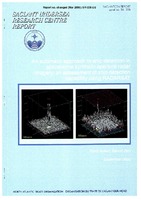| dc.description.abstract | This report describes a methodology for automated ship and wake detection in space-based synthetic aperture radar (SAR) imagery. The methodology incorporates a multistage approach involving several algorithms which can be applied according to requirements, computational resources, and scene composition. We suggest that the localized K-distribution be used for scene segmentation and identification of regions containing probable targets. For a more detailed quantitative scene analysis and accountability for probabilities of occurrence of targets in conjunction with other oceanic features, a coupled neural-networks/Dempster-Shafer detection system is used. The mathematical morphology algorithm is better suited for SAR imagery with low signal-to-clutter ratios, as it incorporates neighbouring information and signal amplitudes for target detection. The methods are tested on several RADARSAT images with different imaging geometry and beam modes. On the basis of our findings, concerning the use of different RADARSAT imaging modes, we demonstrate conclusively that the STANDARD beam is far superior to SCANSAR-NARROW beam for automatic ship detection. | |
